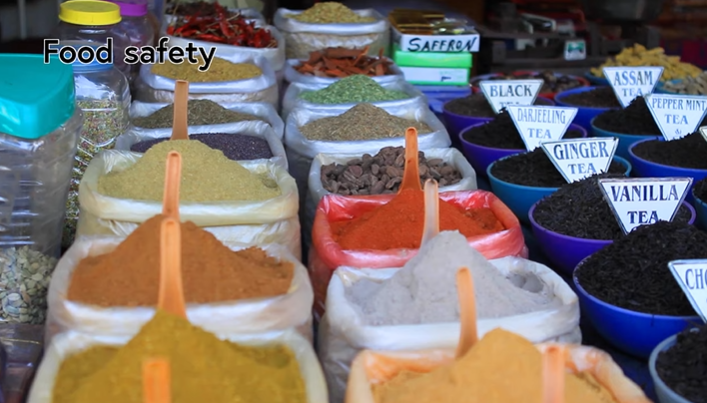Detection of Foreign Bodies in Foods through Sieving and Filtration
All food-producing units must ensure that the food they are producing is not contaminated by foreign objects. This prevention is accomplished with proper Good Manufacturing Practices (GMPs), proper sanitary design of facilities and equipment, and instituting appropriate personnel practices. Detection of Foreign objects or foreign bodies in foods through sieving and filtration is of utmost importance for consumer safety.
The foreign bodies can be detected and prevented in foods with the following two method
| Food Type | Detection of Foreign Bodies By |
|---|---|
| Dry Ingredients | Sieving |
| Liquid Ingredients | Filtration |
Foreign Object Devices for Foreign body detection
Each food-producing unit regardless of its size must evaluate the potential foreign object hazards inherent in certain processes. If applicable, each food-producing unit must install the appropriate product safety devices to ensure reasonable protection from foreign object contamination. Wherever product safety devices are in use, they must be appropriately monitored, calibrated, and tested to ensure they are continually maintained and operated as designed.
Selection Of Appropriate Technology for foreign body detection
Selection of foreign body detection devices and appropriate technology should be done following the careful consideration of several factors. The equipment supplier should be consulted concerning the actual application.
Factors to be considered when determining the most appropriate technology include, but are not limited to:
- Process inspection stage e.g. before or after filling/packaging
- Target consumers (e.g. Infants)
- Raw materials – consider intrinsic and Extrinsic
- Product dimensions
- Packaging Material e.g. aluminum lids Product viscosity/texture (e.g. liquid milk vs. Meat-based puree)
- Historical complaints data – types of foreign bodies received
- Inspection speed
Foreign body detection equipment must be specified as appropriate for the products that are being examined. When selecting new equipment consideration should also be made for the after-sales services including training, servicing, and emergency call-out. Foreign Body Detection in Foods through Sieving & Filtration is most widely used in food manufacturing these days as it is a very effective way to prevent foreign bodies from going into food products.
Foreign Body Detection in Dry Ingredients
All dry ingredients must be sieved before addition to the process. It is not acceptable to rely only on sieving by ingredient suppliers. The only exception is where the action of sieving causes the ingredient particles to fractionate or break down e.g. crumb, or brown sugar. Where pre-weighed ingredients such as seasonings have been sieved by the ingredient manufacturer immediately before the packing machine and are opened and dispensed with a high degree of visual inspection.
Guideline Mesh Sizes for dry ingredients
| Maximum Sieve Mesh Sizes | Dry Ingredient Examples |
| 1.0 mm | White wheat flour |
| 1.0 mm | Baking powder |
| 2.5 mm | Salt |
| 2.5 mm | Icing Sugar |
| 2.5 mm | Rice Flour |
| 2.5 mm | Bread Improvers |
| 2.5 mm | Compound Seasonings |
| 2.5 mm | Corn Flour |
| 2.5 mm | Rusk |
| 2.5 mm | Dextrose |
| 2.5 mm | Rye Flour |
| 2.5 mm | Granulated Sugar |
| 2.5 mm | Semolina |
| 2.5 mm | Maize |
| 2.5 mm | Seasoning/Herb blends |
| 2.5 mm | Rice |
| 5.0 mm | Coconut |
| 5.0 mm | Granary Flour |
Sieve Construction & Location for Foreign Body Detection
Sieving rooms/areas should segregate sieved from unsieved ingredients. The recommended arrangement is sieving through a wall or barrier which forms a complete separation between sieved and unsieved ingredients.
Some other requirements related to foreign body detection in Liquid ingredients are as under.
Foreign Body Detection in Liquid Ingredients
Liquid ingredients must be filtered to the smallest achievable mesh size as close as practical to the point of use e.g. water, milk – 0.5mm, glucose – 1mm. The only exceptions are:
- Where the ingredient is too viscous and will not flow adequately through a mesh size of less than 5mm. In such cases, the possibility of heating the liquid to be able to filter it in[1]line should be evaluated and where practical this must be implemented.
- Where, in the case of minor ingredients, the quantity of the liquid being used is small and dispensing is carried out manually with a high degree of visual inspection.
Liquid chocolate must be either in-line filtered or passed through an open vibratory sieve of the smallest achievable mesh size e.g. 1 – 2mm. This should take place as late as practical in the liquid phase of the chocolate handling process.
In-line magnets should also be positioned in appropriate liquid ingredient pipelines (e.g. chocolate).

Some other requirements related to foreign body detection in Liquid ingredients are as under.
FAQ

